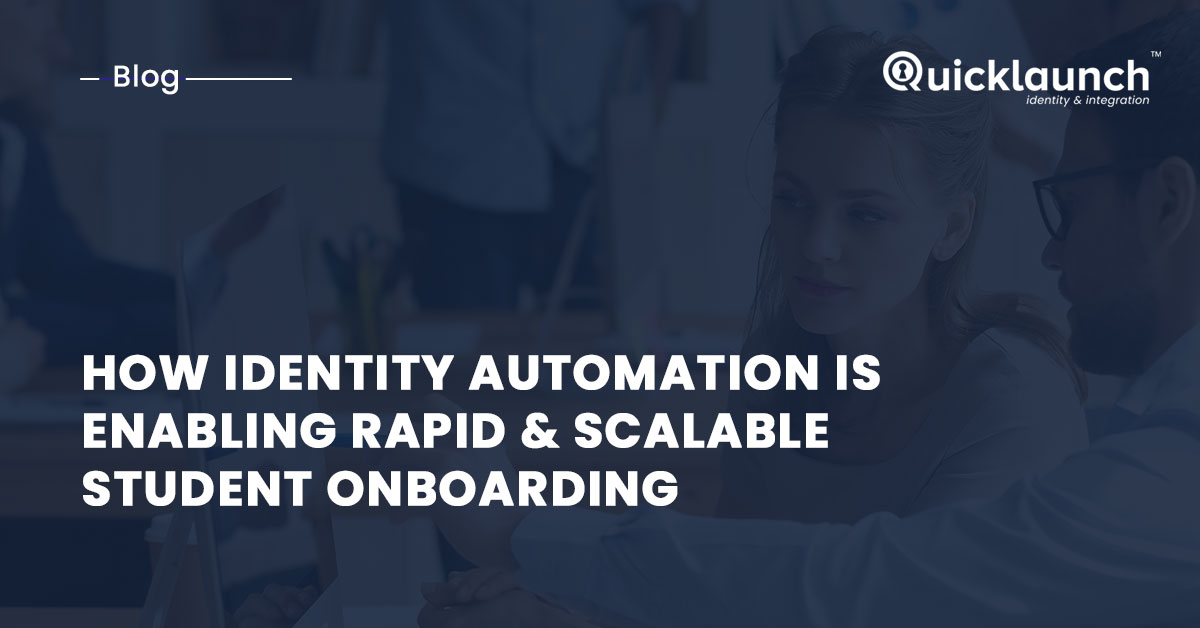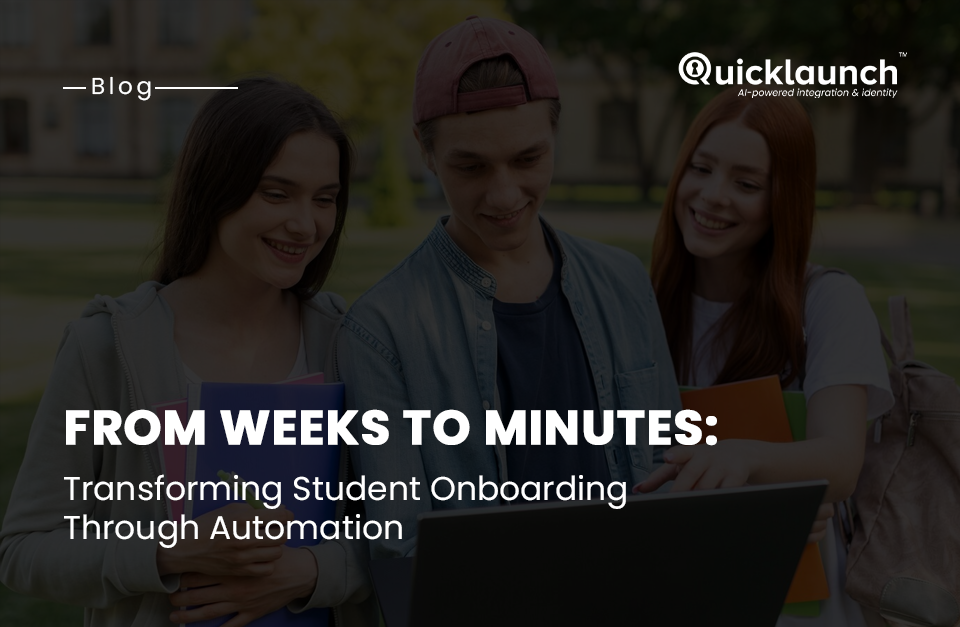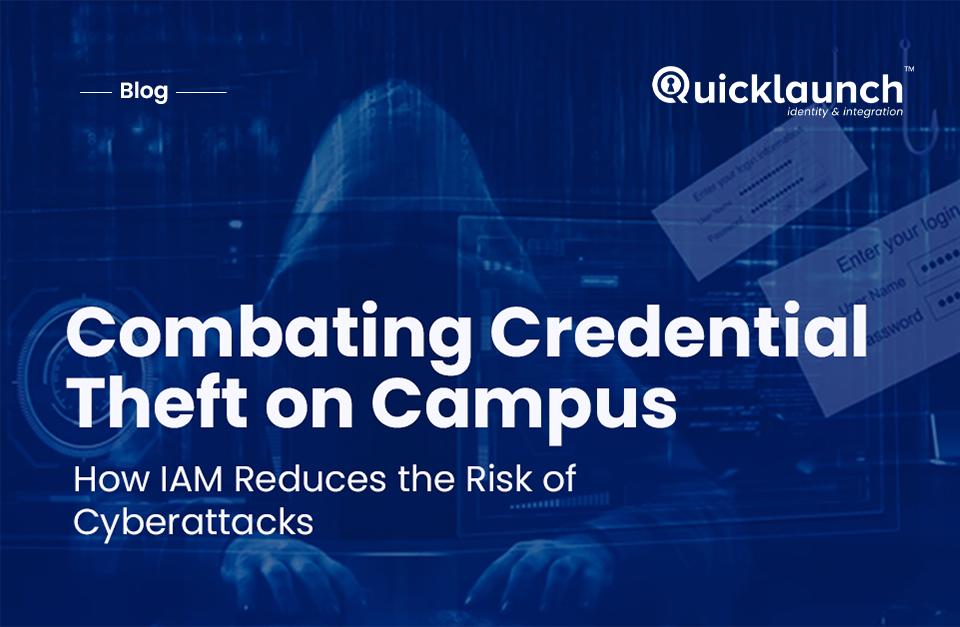Modernizing IT Operations in Higher Ed: How Automation is Enabling Scalable Student Onboarding

Combating Credential Theft on Campus: How IAM Reduces the Risk of Cyberattacks
May 6, 2025
From Weeks to Minutes: Transforming Student Onboarding Through Automation
June 5, 2025
In today’s fast-evolving higher education landscape, IT departments are under immense pressure to do more with less. With rising enrollment numbers, shifting modalities (in-person, online, hybrid), and growing security expectations, IT leaders must find innovative ways to streamline operations, improve user experiences, and safeguard institutional data—all while maintaining cost-efficiency.
One area where automation is proving to be a game-changer is student onboarding. Traditionally labor-intensive, error-prone, and slow, the onboarding process is undergoing a quiet revolution. Institutions that embrace automated provisioning and deprovisioning are not only improving operational efficiency but also delivering a seamless, secure experience for students, faculty, and staff.
The Traditional Bottleneck: Manual Identity Management
For many U.S. colleges and universities, onboarding thousands of new students each term means manually creating user accounts, assigning roles, provisioning access to systems like LMS, email, library services, and more. The risks of manual workflows are well known:
- Delayed access to critical systems on day one
- Human errors in assigning permissions
- Security vulnerabilities due to missed deprovisioning
- Overburdened IT staff during peak enrollment periods
These inefficiencies create a ripple effect across campus—impacting student satisfaction, faculty productivity, and overall institutional agility.
The Case for Automation in Student Onboarding
Automated identity lifecycle management transforms onboarding from a manual, reactive task into a strategic, policy-driven process. Here’s how automation is enabling higher ed IT teams to scale without sacrificing security or control:
1. Accelerated Time-to-Access
Automated provisioning ensures that students receive the right access at the right time. Whether it's their LMS, campus Wi-Fi, or virtual advising portal, students can hit the ground running—often minutes after enrollment records are finalized.
2. Policy-Based Role Assignment
With automation, IT can define onboarding policies based on attributes such as enrollment status, program, or campus location. This eliminates guesswork and ensures consistency across departments and user types.
3. Seamless Integration with SIS and HR Systems
Automation platforms integrate with Student Information Systems (SIS) like Banner, Ellucian, or PeopleSoft, triggering account provisioning in real time based on enrollment events—no more manual batch uploads or data syncing.
4. Improved Security through Timely Deprovisioning
Just as quickly as users are onboarded, automation ensures timely deactivation when students graduate, withdraw, or change roles. This reduces exposure to orphaned accounts and enhances compliance with FERPA, HIPAA, and other regulatory requirements.
5. Operational Efficiency and Cost Savings
By reducing manual workloads, institutions can reallocate IT staff to higher-value projects, such as digital transformation initiatives or strategic planning. Automation also minimizes costly errors and service desk tickets.
Real-World Impact: Scaling with Confidence
Forward-thinking institutions across the U.S. are already reaping the benefits of automation. Some have reduced onboarding times from days to minutes. Others have virtually eliminated access issues at semester start, improving both IT morale and student satisfaction.
In an era where higher education is being asked to do more with constrained budgets and staffing, automation isn’t just a convenience—it’s a strategic necessity.
Key Takeaways for IT Leaders
- Automated onboarding enhances both scalability and security.
- Policy-driven workflows eliminate inconsistencies and reduce manual intervention.
- Integrated identity management improves compliance and operational oversight.
- Timely deprovisioning is essential for data protection and risk mitigation.
As digital transformation reshapes higher education, CIOs, CTOs, and senior IT leaders must take a proactive approach to modernizing legacy processes. Automating student onboarding is one of the most impactful ways to reduce IT friction, improve institutional agility, and deliver a better experience for everyone on campus.
It’s time to move from reactive to strategic. Automation is the bridge.
Want to learn how your institution can implement seamless Identity Lifecycle Management? Contact us today!




